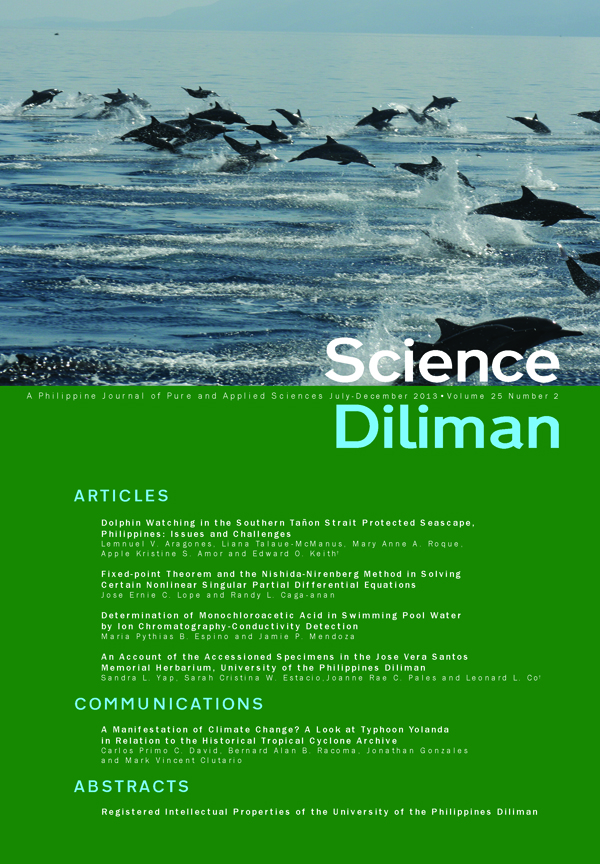An Account of the Accessioned Specimens in the Jose Vera Santos Memorial Herbarium, University of the Philippines Diliman
Abstract
The University of the Philippines Herbarium was established in 1908 and originally located in Ermita, Manila. The majority of its pre-war collections were destroyed during World War II, and no formal records of its specimens were preserved. Since then, multiple efforts to restore and improve the Herbarium have been proposed and implemented, most notably its move to the UP Diliman campus. In 1999, the Herbarium was off icially renamed as the Jose Vera Santos Memorial Herbarium after the noted grass expert, who initiated rehabilitation work in the Herbarium after the war. The Herbarium is registered with the international code PUH in the Index Herbariorum, a global directory of public herbaria managed by the New York Botanical Garden. To assess the accessioned (uniquely numbered and recorded) collection of the Herbarium, an electronic database of its accessions was created.The Herbarium currently contains 14,648 accessions, 12,681 (86.6%) of which were collected in the Philippines. This is comprised of 309 families, 1903 genera, and 4485 distinct species. Thirty-nine type specimens form part of the collection, only one of which is a holotype. On the basis of major plant groups, angiosperms make up 71% of the collection. Unsurprisingly, Family Poaceae has the largest number of specimens at 2,759 accessions. The earliest dated Philippine specimen was collected by E.D. Merrill in 1902, and roughly half of the total accessioned specimens were collected in the 1950s and 1970s. The two most prolif ic collectors were Santos and Leonardo L. Co, with 2,320 and 2,147 specimens, respectively. Luzon is the most well-represented island group with 2,752 specimens collected in Metro Manila alone. At present, PUH Curator James V. LaFrankie is working on the expansion of the collection and upgrading of the herbarium to encourage future educational and research activities.
Keywords: Herbarium, botany, museum, collection, Philippine flora



